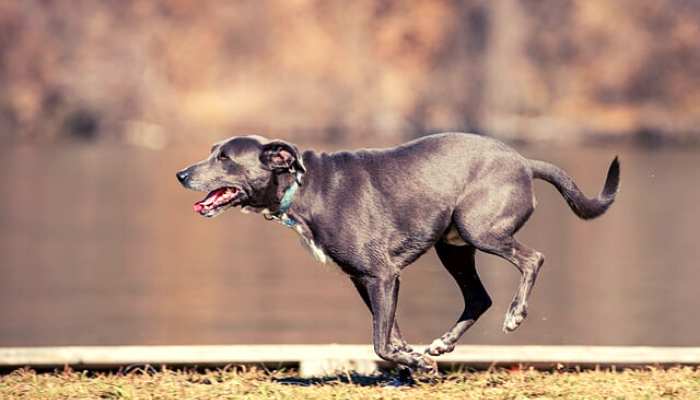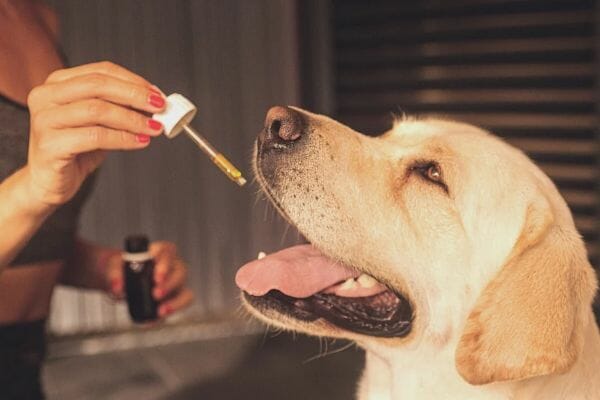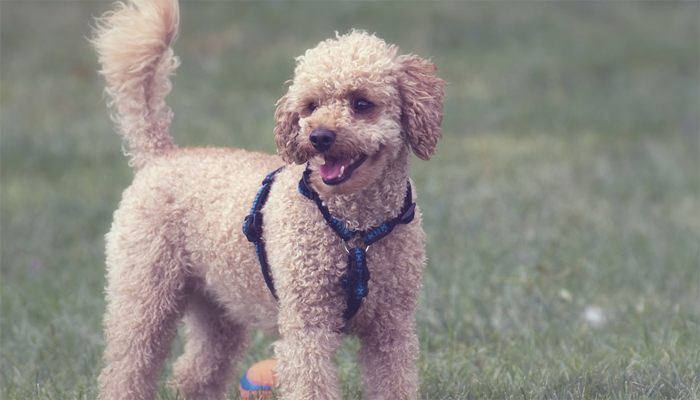Meet the Labrador Retriever: America’s Favorite Family Dog
Table of Contents
The Labrador Retriever is recorded to be the most popular dog breed in the United States as of 2021, and they have held this number one spot for quite a while. There is a very good reason for this, as Labs make for the ideal pet for many families. Here we will be explaining everything that there is to know about the Labrador Retriever.
What is a Labrador Retriever?

The Labrador Retriever is a part of the sporting group according to the American Kennel Club. This group mainly consists of Retrievers, Setters, and Spaniels.
Where did the Labrador Retriever Originate From?

The Labrador Retriever originated from Canada in the 1800s. In Canada, these dogs were companion dogs who worked alongside fishermen and common people.
English elite discovered these Canadian dogs in the 1800s, and many of these people brought Labs back to England with them. It was here that their breed standard was created.
What was the Labrador Retriever Bred For?

The Labrador Retriever was originally bred to be a water retriever, and they would retrieve both fish and ducks for their companions. This made the Lab a popular choice among both fishermen and duck hunters alike. Many fishermen and hunters use Labrador Retrievers as companions and helpers to this day.
What Does a Labrador Retriever Look Like?

The Labrador Retriever has a friendly and sturdy appearance to them. Here we will be breaking down what a Lab should look like according to its official breed standard.
The Labrador Retriever’s Coat
The Labrador Retriever can come in three coat colors yellow, chocolate, and black. Yellow labs can range in shade from very light yellow to a dark, rusty yellow color. The Lab should always have a short, double coat. This coat is known to shed quite a bit.
Other Unique Characteristics
The Lab should have friendly-looking eyes that are either brown, gold, or hazel. They will also have short, floppy ears and a long tail. The snout on a Labrador Retriever should be well proportioned to its head.
How Big Does a Full-Grown Labrador Retriever Get?

Labrador Retriever Height
Male Labrador Retrievers will be between 22.5 and 24.5 inches tall at the shoulder. Meanwhile, female Labrador Retrievers will be between 21.5 and 23.5 inches tall at the shoulder. Males tend to be taller than females.
Labrador Retriever Weight
Male labs can be anywhere between 65 and 80 pounds, and females tend to be smaller between 55 and 70 pounds.
How to Take Care of a Labrador Retriever

The Labrador Retriever is an energetic dog that requires daily grooming and exercise. Here we will be explaining everything that prospective Labrador Retriever owners will need to know about taking care of a Lab.
Labrador Retriever Exercise Needs
The Lab is an energetic dog that needs around an hour of exercise each day. Exercise can include going for walks, playing games like fetch, and even going for a swim. Labrador Retrievers can vary in energy level, but giving each Lab an hour of exercise a day will help to keep them both healthy and happy.
Labrador Retriever Grooming Requirements
The Labrador Retriever’s short water repellant coat needs to be brushed frequently. This will help prevent loose hair from collecting around the house, and it will also keep their coat looking shiny and clean.
If you can help it is only recommended that you bathe your Lab once a month. This will keep their skin and coat healthy while also keeping them clean. It is also a good idea to brush your dog’s teeth daily or as often as possible. Nails should be trimmed regularly as well.
You should also check your Labrador Retriever’s ears regularly. This is because floppy-eared breeds like Labs are more at risk for ear infections and the build-up of debris. If you notice buildup around the ears it’s a good idea to give them a quick clean. This can help prevent ear infections.
Labrador Retriever Dietary Needs
Most Labrador Retrievers should be eating 2.5 cups of food each day. Most Veterinarians suggest that you split this daily ration up into two meals that are about 1 and 1/4 cup each. This can help prevent medical conditions like bloat.
It is important to mention that you will likely need to be very careful about how much food you are feeding your Labrador Retriever each day. This is because Labs are prone to overeating and weight gain.
Some food allergies that are common in Labs are allergies to beef, chicken, and corn. Additionally, allergies to milk and eggs are not uncommon. Food allergies can manifest themselves as stomach upset and itchy skin in dogs.
Are Labrador Retrievers Easy to Train?

Yes, Labrador Retrievers are known to be very easy to train in basic obedience. This has led to labs excelling as service dogs, search and rescue dogs, and therapy dogs. If you are looking for a dog that is easy to train and eager to please, then the Lab is the dog for you.
Are Labrador Retrievers Easy to Potty Train?
Labrador Retrievers are also known to be pretty easy to potty train as long as you stick to a strict potty schedule. When you do this Lab puppies will usually learn where to use the bathroom and how to alert their owners when they need to go potty pretty quickly.
What is the Labrador Retriever’s Temperament?

The Labrador Retriever is known for being a dog that is friendly and outgoing. This makes the Lab a great family pet that can get along with just about anyone. Additionally, Labrador Retrievers tend to love being active, playing games, and doing outdoor activities. This is great for those who love going for hikes, going camping, and just enjoying the great outdoors.
Does the Labrador Retriever Do Well With Children?
The Labrador Retriever is possibly one of the most child-friendly dogs out there. This is thanks to the Lab’s gentle and friendly nature. Plus, Labrador Retrievers love to play, so they are great for kids that want a dog to play with.
Does the Labrador Retriever Do Well With Other Pets?
Labrador Retrievers are also known to behave very well around other pets, especially when properly socialized to them at an early age. This is true for both cats and other dogs.
Are Labrador Retrievers Aggressive?
Labrador Retrievers are not known to be aggressive dogs by nature. This is especially true if a Lab is well bred and raised properly. It is still important to remember though that any dog could potentially become aggressive if they have been mistreated.
What Environment is Ideal for a Labrador Retriever?
Labs are large dogs that tend to need a lot of daily exercise and space. As a result, Labs tend to do better in suburban or rural settings, and Labs are not usually suited for city life. As for climate, Labs can handle both hot and cold weather reasonably well.
What is the Average Lifespan of a Labrador Retriever?
The average life span for the Labrador Retriever is estimated to be 11 to 13 years.
Labrador Retriever’s Common Health Issues

Though the Labrador Retriever is generally considered to be a fairly healthy breed, there are some medical conditions that can affect them. The main health issues that tend to affect labs are hip dysplasia, elbow dysplasia, and eye problems. Luckily, these conditions are fairly easy for reputable breeders to prevent.
Additionally, Labrador Retrievers are at a greater risk of developing a gastric torsion than some other dog breeds. Epilepsy is a health concern for the Labrador Retriever dog breed as well.
How Much Does a Labrador Retriever Cost?

When buying a Lab puppy from a good breeder in the United States you can expect to pay somewhere between $800 and $3,000. The main things that can dictate prices are the area that you live in and the specific breeder at hand. For example, some breeders may ask for more money simply because their dogs come from AKC championship-winning pedigrees.
If you are looking to get a Labrador Retriever for a bit cheaper then looking into breed rescues or local animal shelters may be the way to go. The adoption fees are usually cheaper than $800, and the Labrador Retriever is a very common breed. This means that you are more likely to find a Lab in need of adoption than some other rare dog breeds.
Other Similar Dog Breeds

Do you like the idea of a Lab but want to explore some other similar dog breeds before getting one? Well, you are in luck because there are many dog breeds that have similar temperaments and care requirements to the Labrador Retriever. Here we will be explaining a bit more about the Golden Retriever, the Chesapeake Bay Retriever, and the Weimaraner.
The Golden Retriever
The Golden Retriever is a dog breed that is very similar to the Labrador Retriever. Not only do they also tend to do great around children and other pets, but they also have very similar care needs. The only difference between the two breeds is their grooming requirements and health concerns.
Goldens are also very intelligent dogs that are easy to train, and they are also known for loving a good swim. Luckily, Golden Retrievers are also an incredibly common dog breed. This means that it should not be too difficult to find a good Golden Retriever breeder in your area. You should also be able to find a Golden Retriever through a shelter or rescue fairly easily as well.
The Chesapeake Bay Retriever
The Chesapeake Bay Retriever is an adorable wiry-coated water retriever originating in the United States. These dogs are very similar to the Lab in size, temperament, and original purpose. However, you may need to groom a Chesapeake Bay Retriever a bit more often than you would need to for a Lab. Chessies are also much rarer than the Lab, so you may have a harder time finding a good breeder.
Additionally, you may also need to be more careful about properly socializing your Chessie with children and other pets from an early age. You may also need to watch the Chesapeake Bay Retriever, more closely around kids and other pets as well. This is because even though Chesapeake Bay Retrievers can do fairly well around children and other animals, they are not as reliable as the Lab on average.
The Weimaraner
The Weimaraner is a dog in the sporting group that is as high-energy as the lab. They are also known to be incredibly trainable and intelligent, and the two dog breeds have very similar care requirements. Additionally, Weimaraners are known to be pretty affectionate with their owners and tend to behave very well around children.
Similarly, Weimaraners are known for behaving fairly well around other dogs. If you have cats it is recommended that you socialize your Weimaraner with them early on. You should also always monitor your Weimaraner around cats. Weimaraner breeders can be a bit more difficult to find than Labrador Retriever breeders. However, the Weimaraner is more common than the Chesapeake Bay Retriever. Learn more about this awesome breed, the Weimaraner.
Finding the Right Breeder

Many people will choose to get their Labrador Retriever puppy from a breeder. This can be a great choice for many families. However, when doing this it is very important that you find a Labrador Retriever breeder that is both ethical and reputable. Here we will be breaking down what a good Lab breeder looks like and some red flags to be aware of.
Things Every Good Labrador Retriever Breeder Will Do
There are some things that every good Labrador Retriever breeder will do. Here we will be breaking down what goes into the ethical and reputable breeding of Labrador Retrievers.
- Every dog is housed in clean and safe living conditions.
- Every dog and puppy is kept in good health with up-to-date vaccinations and preventative care.
- Their Labs are health tested for hip dysplasia, elbow dysplasia, and eye problems before being bred.
- Their Labs have received DNA testing for the genetic conditions that commonly affect the Labrador Retriever breed.
- All Labs are provided with enough exercise and mental stimulation daily.
- Puppies receive proper socialization.
- Puppies have pedigrees and are proven purebred Labs.
- The breeder helps new owners learn new information on the Labrador Retriever breed and how to properly care for puppies.
- The breeder only breeds healthy dogs that have good temperaments.
- The breeder is a member of official dog clubs like the American Kennel Club and the Labrador Retriever Club.
Signs You Should Avoid a Labrador Retriever Breeder
There are also some red flags that you should look out for when choosing a Labrador Retriever breeder. Here are some signs that you may want to avoid a certain Labrador Retriever breeder.
- The breeder will not let you see where their dogs are kept.
- The breeder will not let you meet your puppy’s parents.
- The breeder will not show you proof of pedigree or health testing.
- The breeder does not keep their puppies up to date on vaccinations or other preventative care.
- The breeder does not health test their dogs before breeding them.
- The breeder lets puppies go to their new homes before they are eight weeks old.
- Puppies are not socialized.
Conclusion (Is the Labrador Retriever Right for You?)
The Labrador Retriever is a great fit for active families with kids and other pets. This is especially true if you are also looking for a dog that is easy to train and does not need to be groomed all too often. Although they can be prone to some health issues, the breed is pretty healthy, especially if the dog comes from a good breeder who health tests their dogs before breeding them.







